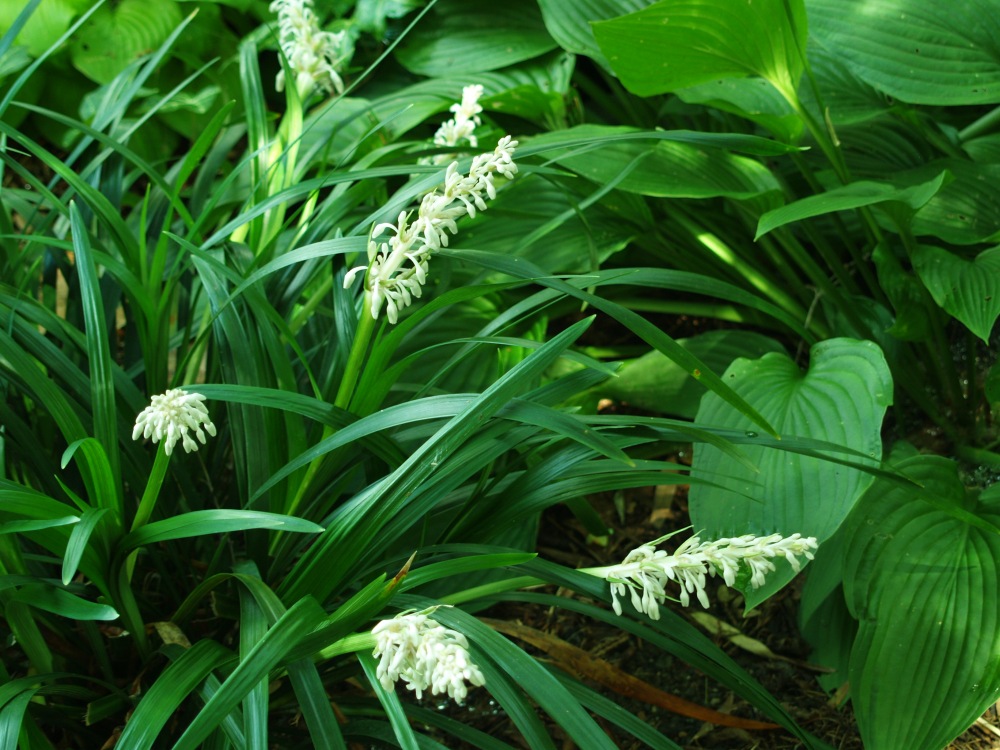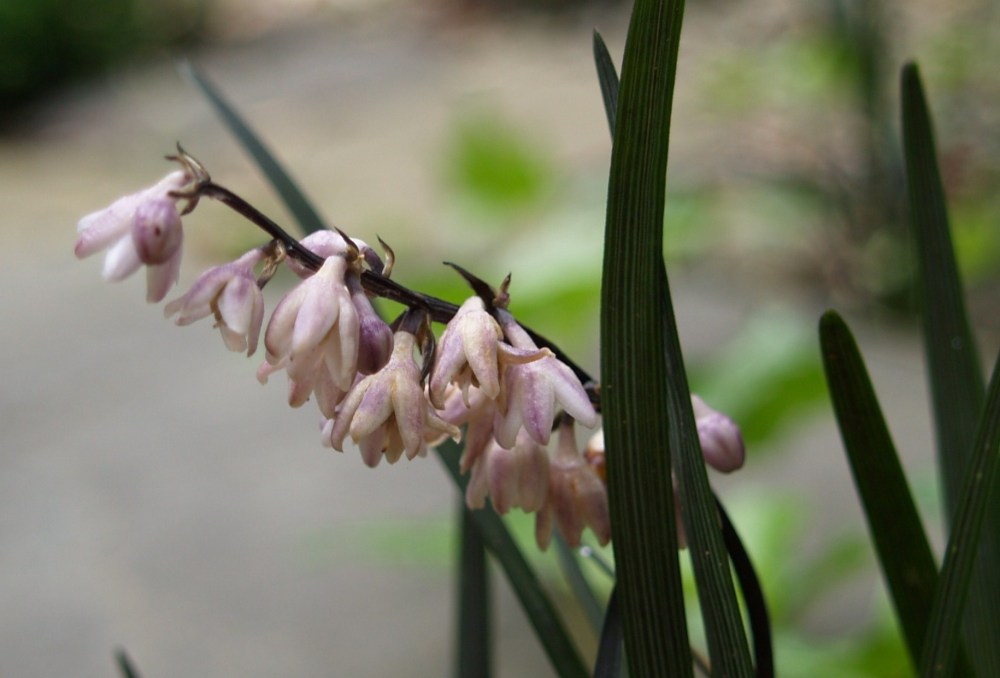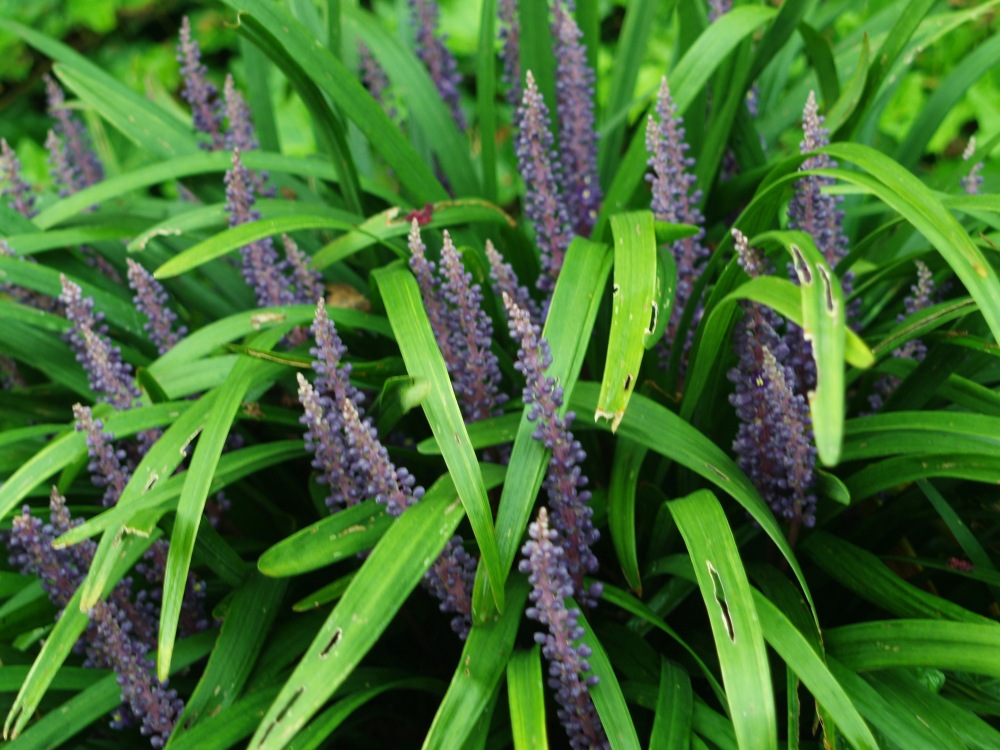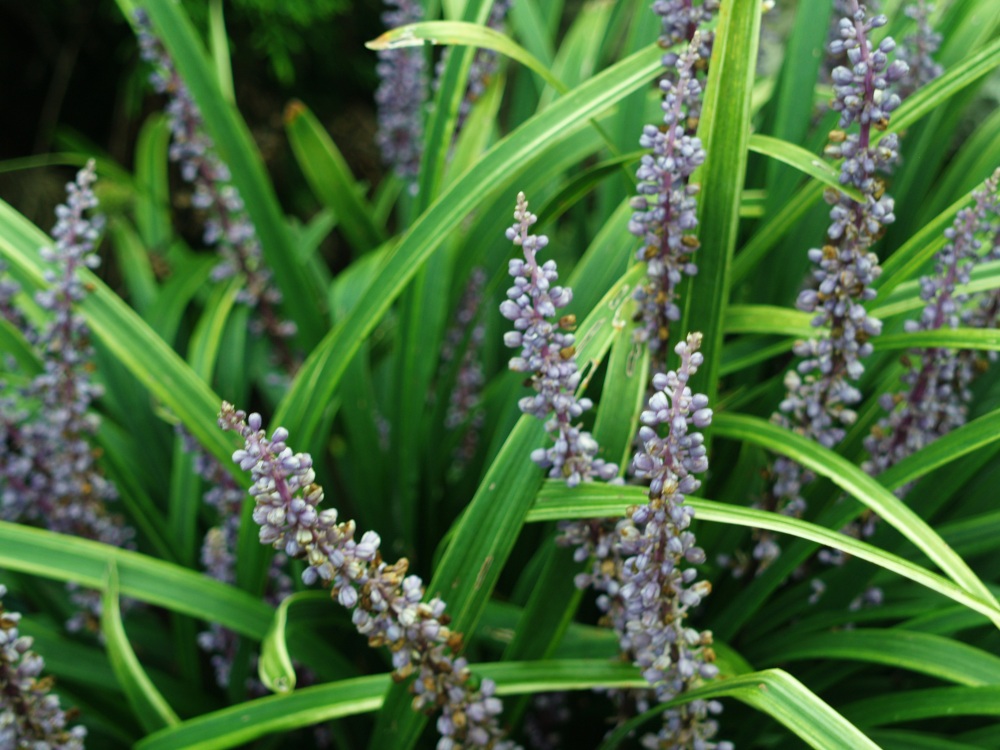The spring after planting ‘Crystal Falls’ mondo grass (Ophiopogon jaburan ‘Crystal Falls’, below) I cut its slightly weather beaten foliage back to the ground, just like I do with liriopes. I’ve also planted dwarf mondo grass (which I don’t cut back unless it is severely damaged by the winter) and black mondo (that doesn’t seem to suffer any injury due to the winter), but the tall ‘Crystal Falls’ seemed more similar to liriopes. The few times I’ve cut dwarf mondo back it seemed to take forever to recover, and I learned with ‘Crystal Falls’ that this is likely to be a trait shared by other mondo grasses.
After being cut back, no growth was evident at the end of May, and I can’t recall precisely, but I don’t believe there was any new growth until July (maybe). In any case, I decided that this would be the last time I’d cut back ‘Crystal Falls’, and if it looked bad again next spring perhaps it would be better to dig it out and forget about it. Fortunately, the next two winters have not damaged the foliage to an extent worth worrying about, so it’s still here, and in late August it’s blooming.
‘Crystal Falls’ is considerably taller than other mondo grasses (Ophiopogon planiscapus ‘Nigrescens’, black mondo, above), and taller than the common liriopes. I’ve seen it planted in nearly full sun, and in fairly heavy shade, and it looks much happier in the shade. Both sun and shaded plants flower at about the same time, but the foliage of the mondo grasses in part shade is much greener and more vigorous looking. The sun grown mondo has grown fuller, so it grows faster with more sun, but the foliage is stressed by the heat and sun.
‘Crystal Falls’ (and other mondo grasses for that matter) are great filler plants between shrubs and tall perennials. They also work well standing alone as a tall border edger, but they shine when plugged into a gap between large leafed hostas and broadleaf evergreens. The arching flower spikes of ‘Crystal Falls’ stand taller than the foliage, so the blooms stand out more than other mondo grasses or liriopes.
For spaces between smaller shrubs and perennials, or for massing, liriopes are very useful, both in sun and shade. The green leafed ‘Big Blue’ (Liriope muscari ‘Big Blue’, above) is nearly evergreen in my garden, with only minor foliage damage in typical winters, but the foliage of variegated types (below) is usually damaged so that it must be cut to the ground each spring. The liriopes are now flowering in the garden, and their blooms are a delightful, rich purple.
I’ve also planted the almost white flowering, spreading liriope (Liriope spicata, below) in difficult areas where I want to fill a space. This is a plant that’s aggressive enough to be considered a nuisance, though not to the point to be called invasive. In my garden I must monitor my wife whenever she ventures out to be sure she’s not digging it out of one spot or another. Her aversion to spreading plants lumps liriope and running bamboos into one category, regardless of how easily they are controlled.
In fact, the spreading liriope is not as attractive as the clumping forms in either foliage or flower. It is a handy plant for difficult spaces, but Liriope muscari and mondo grasses are superior for filling smaller spaces or for edging beds.
Dave….not sure which variety we have, but we’ve planted it as a tall border which encloses a wooded “island” in the middle of our very large, green back yard. If I can stay ahead of the deer and spray repellent on it, it seems to thrive in both full sun and partial shade. It struggles a bit in deep shade, but still produces tall, purple blooms. For reasons unknown, it has behaved itself and has not spread outside the imaginary border line I originally dug. Maybe it’s because the soil surrounding it is so poor, it stays put awaiting my periodic fertilizer and water. If the deer get to it in winter or early spring, it looks pathetic for the rest of the season. This year, however, it’s grown to about 12-18″. My parents called it “Bear Grass,” but I get funny looks from your nurserymen when I use that term.
Purple flowers indicate that this is a liriope. There is such a thing as bear grass, but it’s quite a different kind of plant. I’m sorry I didn’t mention that deer will eat liriopes (and probably mondo grasses), but they’re not one of their absolute favorites when there are other delectable choices in the summer garden.
To save maintenance I don’t spray my variegated liriope with deer repellent in late autumn. Sure enough, the deer nibble it to the ground so I don’t have to prune it.